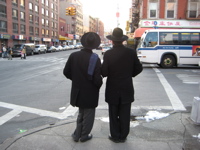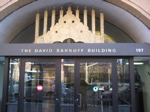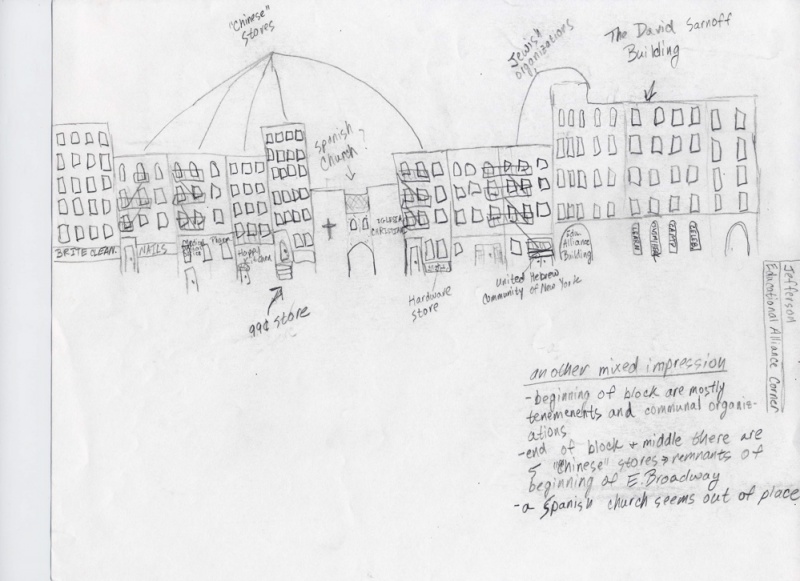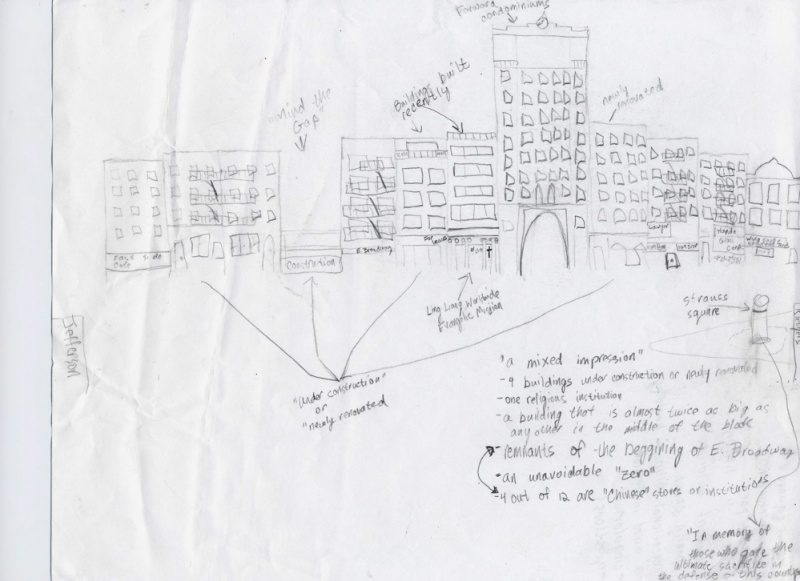Yeshivah
From East Broadway, Chinatown
Yeshiva
History and Significance
The Mesivtha Tifereth Jerusalem (MTJ) Yeshiva is referred to by as simply Yeshiva by people who live in the Lower East Side, and has been an essential part of the Jewish community in the Lower East Side since the beginning of the 20th century. The Mesivtha Tifereth Jerusalem (MTJ) Yeshiva is one of the oldest yeshivas in New York City, and was one of the few yeshivas open in New York City in 1907 when it opened 87 Eldridge Street (and was called Talmud Torah Tifereth Jerusalem Yeshiva). Since then the MTJ Yeshiva has moved several times and in 1912 found its permanent location on 145 East Broadway and an adjacent location on 147 East Broadway. Since many Jewish immigrants in the beginning of the 19th century came in families (unlike other immigrants such as the Irish, Italians, etc. who came alone and then either came back to their families or sent for their families), the Yeshiva was a vital part for providing the immigrants' children to still connect to their religion and culture. In 1937 the Yeshiva was taken control by Rabbi Moshe Feinstein (who took over as the mashgiach or the dean), who for up until his death in 1986 was the most renowned Rabbi and he became the leading halachic (religious law) authority of his time and his rulings were accepted worldwide. He turned the Yeshiva to a tradition of tolerance which doesn't constitute a closed society. He allowed all categories of Jewish children to learn at his Yeshiva, ranging from Ashkinaze Jews to Sephardic Jews to Syrian Jews, and from highly religious and practicing to just religious. At the time this policy was instituted, this sort of practice was unheard of. Feinstein took this ideology and applied it MTJ's second campus in Staten Island, which he opened and gave the responsibilities to head the yeshiva to his son, Rabbi Reuven Feinstein. His other son, Rabbi David Feinstein took over the Lower East Side branch and continued to follow in his father's footsteps. Another distinction of the Yeshiva, is its continuing study hall, where students up to the age of 90 attend to continue their studies. "[The] school has produced doctors, lawyers, judges, scientists, teachers, and, of course, Torah scholars," says principal Rabbi Ginsberg. The students in the yeshiva range from five years of age to eighteen; the students in the elementary school usually live around the Lower East Side, since they cannot travel by train alone, while the older students in the high school travel from all over New York City, particularly Queens and Brooklyn. Since they are older they are able to take the train, which is only a block away (East Broadway Station where the F Train stops). A peculiar connection is seen between the yeshiva and the Delancey Street Synagogue and Educational Alliance: where a large influx of elementary school students come from "the Educational Alliance Torah Tot program for 4-year olds, and the Delancey Street Synagogue pre-school program".Sample Interview Questions
1) How does the Yeshiva fit into the Jewish community of the Lower East Side? 2) Does the fact that the yeshiva is lovated in Chinatown affect the kids socially? Religiously? 3) How much is religion emphasized in the curriculum? 4) Where do students usually come from? 5) Over the years as more and more Asians settled in Chinatown, how has the Yeshiva changed? 6) What is the overall goal of the yeshiva in terms of educating the children? 7) What impact does the fact that this is an all boys school have on the children?
Mapping Project - East Broadway from Rutgers St to Clinton St
This is the page for the research group on Yeshivah.
Group members: Arkadiy Stepanchuk




